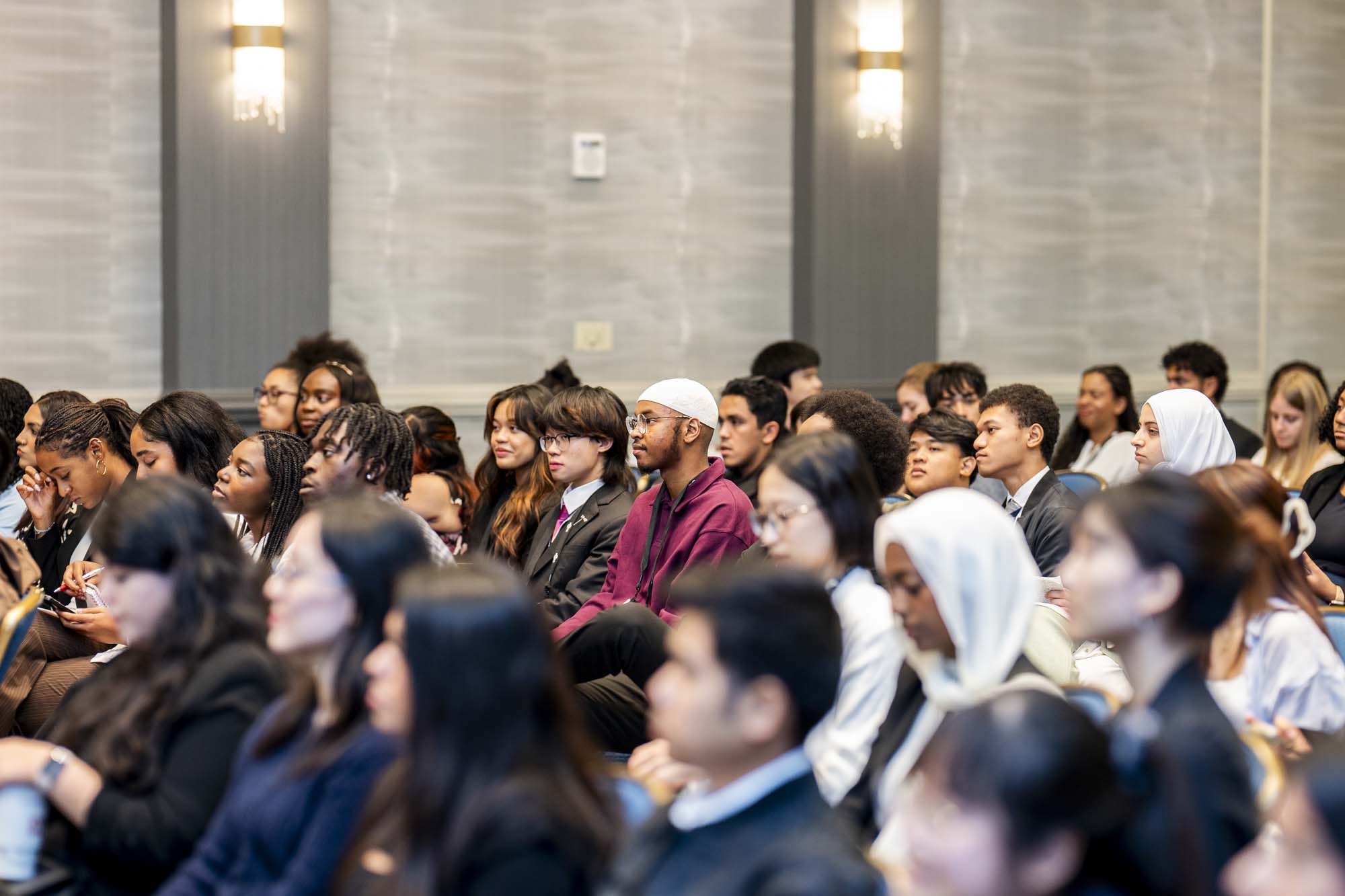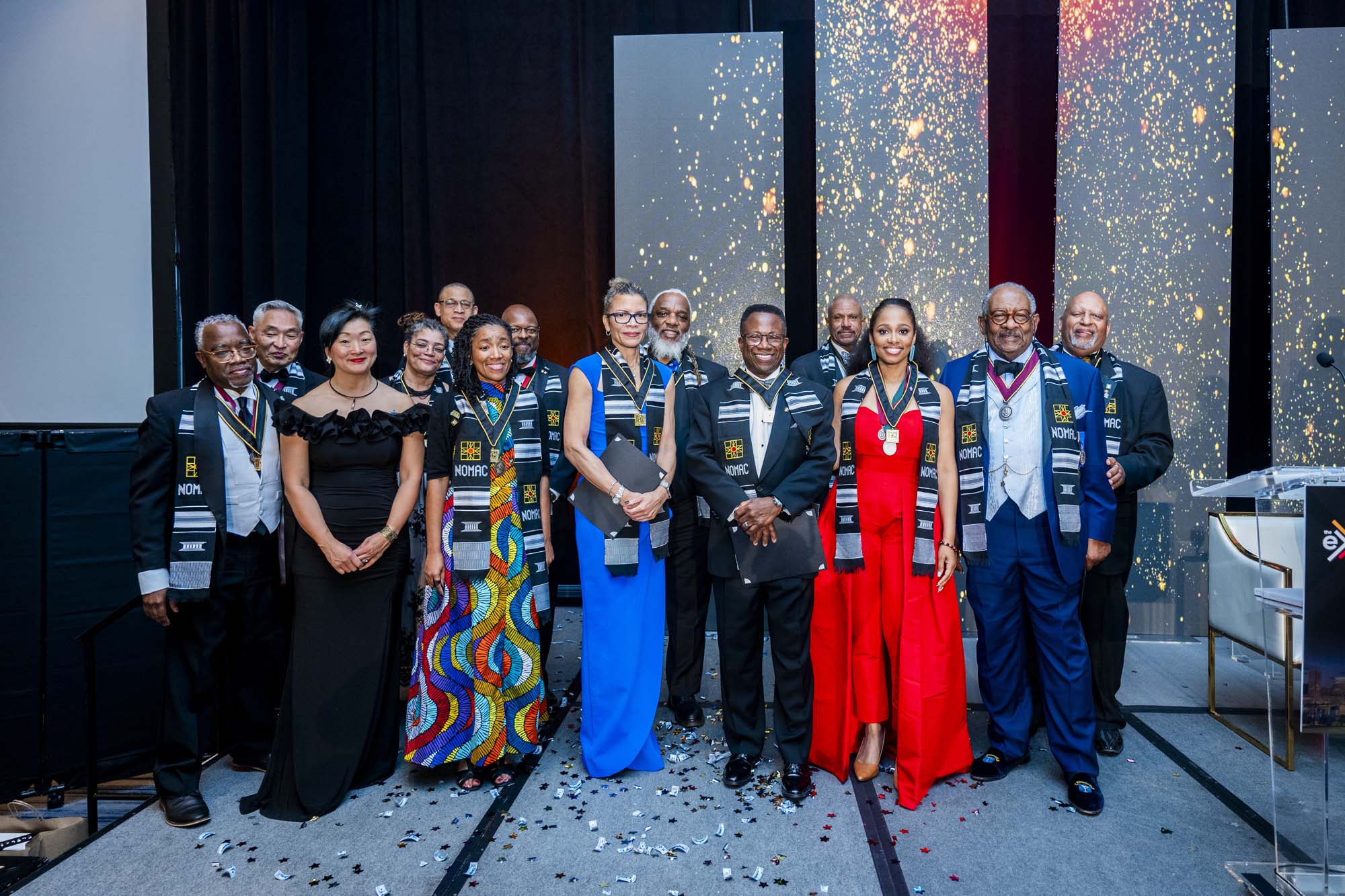
December 4, 2024
Bryan C. Lee Jr. on NOMA’s Vision for Equity
Organizers of the National Organization of Minority Architects’ (NOMA) annual conference are full of optimism after the conclusion of its 2024 edition in Baltimore on Oct. 27.
Founded in 1971, NOMA was intended to represent the needs of African American architects “to bolster and provide support” for the small contingent of licensed architects around the country at that time. But the organization has widened its gaze and scope over the years, now representing the interests of architects of all origins who seek inclusion in the design industry.
So why all the optimism? The conference saw its biggest attendance numbers to date–1,500 professional designers, students, and partners from across the globe, the organization reported. In addition, NOMA had its largest class (40) of newly licensed architects who were recognized and pinned by outgoing NOMA president Pascale Sablan.

“We are achieving greatness and making history, advancing the mission of diversity in architecture and the design field by growing our number of architects, members, allied professionals, and ways to access the pipeline into the design industry,” Sablan said at the conference.
But with optimism, there is also a bit of anxiety as the political climate continues to shift and corporations, institutions, and governments rethink diversity, equity, and inclusion initiatives. The issue is on the mind of incoming NOMA president Bryan C. Lee Jr. During the NOMA conference, METROPOLIS caught up with Lee on his priorities over the next two years and what he hopes to accomplish.
METROPOLIS: What are your priorities for the organization?
Lee: I think the first priority for NOMA going into going into ’25 and ’26 is to reconfigure the playing field for black and brown architects. We need to ensure they have access to RFPs and proposals that enable the creation of new businesses and firms. This involves restructuring procurement processes to highlight the value proposition for students, interns, and young professionals, encouraging them to invest in our cultural knowledge within public spaces or the built environment. As an organization, if we can develop the necessary templates and advocacy platforms to drive these changes, we will see new businesses emerge as a result.
METROPOLIS: As we know there are a lot of people who go to architecture school, but they never become licensed architects. Is there a way for the organization to help?
Lee: It’s extremely important to me because, for so many people who remain adjacent to the field, they’ve gone through practice or completed the educational cycle of architecture but are often pushed aside within the profession. One thing we’ve done in our own practice—and something I think NOMA can also do—is to identify the types of practice these individuals are engaged in and how that work is directly and implicitly connected to creating new spaces in the world.

METROPOLIS: Why do you think that is so hard for people who have gone through four years of education and maybe graduate work and then it’s difficult to become a licensed architect?
Lee: There’s a litany of reasons, but I think the core reason is that the field is oftentimes unwelcoming to those who want to serve in a different way. If you are not entirely focused on building, then it’s harder to find your place as a designer within certain practices. The thing that we’re taught to do in school is to be a designer. That’s what they teach you to do. They don’t teach you to be a project manager. They don’t teach you to know specifications. They don’t teach any of that stuff. And that’s fine, but those are the majority of the roles in practice.
METROPOLIS: To accomplish some of the things you want to do–diversity, equity, acceptance, visibility–you will need allies. Who are NOMA’s allies?
Lee: So within the industry, there’s the American Institute of Architects, American Institute of Architecture Students, Association of Collegiate Schools of Architecture, National Architectural Accreditation Board, and the National Council of Architectural Registration Boards. They have been and continue to be a strong set of allies over the course of the last many years. And they have currently allowed us to join them in that kind of collateral space, which means that we are having conversations across the board about the overall function of practice. We’re currently thinking about how people matriculate through both school and practice over time and how people negotiate their relationships with architecture.

Would you like to comment on this article? Send your thoughts to: [email protected]
Latest
Profiles
Zoha Tasneem Centers Empathy and Ecology
The Parsons MFA interior design graduate has created an “amphibian interior” that responds to rising sea levels and their impacts on coastal communities.
Viewpoints
How Can We Design Buildings to Heal, Not Harm?
Jason McLennan—regenerative design pioneer and chief sustainability officer at Perkins&Will—on creating buildings that restore, replenish, and revive the natural world.




